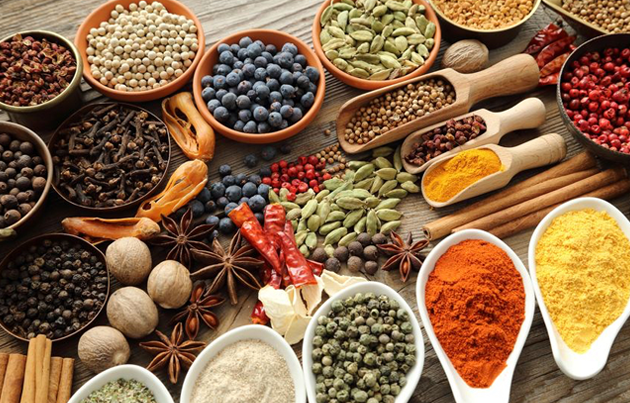We all love a competition now and then! A running race, a sack race, a bicycle race, a swimming race, a painting competition, a cooking competition, the list is endless. But we all like winning, no matter who or what is up against us.
So dear friends, let me introduce a new kind of competition to you! One in which you have to compete not against humans or gadgets, but against some of your own health-related behaviours. Yes, you are up against your own lifestyle risk factors (as shown in the left column) caused by your everyday behaviours (listed in the right column) in the table below.
| Risky Lifestyle |
Negative behaviours that put your health at risk |
| 1. Sedentary life | 1. Jobs that require long sitting hours
2. Long commute in a bus/car/motorised vehicle 3. Television/computer/mobile phone for entertainment 4. Lack of awareness and interest in active lifestyle 5. Inability to exercise due to poor time management 6. Not establishing an exercise schedule that is sustainable |
| 2. Unhealthy diet | 7. Consuming things without knowing their benefits/harms
8. Not maintaining proper meal times 9. Failure to make meal times an enjoyable family time at home 10. Rewarding children/self with unhealthy treats 11. Binge eating or force-feeding yourself/kids 12. Ignorance about food labels and shelf life of foods/beverages 13. Lack of interest in locally available natural ingredients |
| 3. Addiction to tobacco/alcohol | 14. Giving in to peer pressure
15. False belief that consuming tobacco/alcohol is trendy 16. Associating abuse of substances with better quality of life 17. Seeking relaxation in substance abuse 18. Unaware of the poisonous chemicals they contain 19. Reluctance to seek professional help to quit |
| 4. Chronic mental stress | 20. Taking on more responsibility than you can handle
21. Failure to recognize the stress triggers and your reactions 22. Trying to conceal your emotions and feelings 23. Not practicing any stress management technique 24. Considering mental health problems a stigma 25. Self-blame and not giving yourself a chance to feel better |
| 5. Poor sleep habits | 26. Not knowing that sleep is as essential as water and food for us
27. Spending too much time on the screen/monitor/gadget 28. Not maintaining proper sleep hours while working/studying 29. Consuming a lot of stimulants and energy drinks 30. Taking sleeping pills on a regular basis |
Self-Lifestyle Analysis and Monitoring score (SLAM score)
Using the 30 health behaviours and the 5 lifestyle risk factors listed in the table, each one of you can score yourself:
For each health-related behaviour you have, you get -1 point.
For each lifestyle risk factor you have, you get -4 points.
The worst SLAM score (if you have all the behaviours and risk factors) is -50 [that is, (-1×30 = -30) + (-4×5 = -20)=-50].
For example, if you are a bank employee who sits at the counter all day, commutes 45 minutes up and down to work by train, has a busy work schedule and a tight routine at home without much time for yourself, eats at odd hours and has a lot of ongoing stress due to work pressure and expectations at home, and gets less than 6 hours of sleep on average per day, it is highly likely that your SLAM score is in the unhealthy range (-20 to -40).
The ideal SLAM score
If you have identified your unhealthy behaviours and lifestyle risk factors and are ready to change for the better, your SLAM score is 0. Yes, for the first time getting a zero feels good! However, the ideal SLAM score is not 0, but +50. If you have a negative score, converting the negative score to a positive score will drastically change your health for the better. If you have a -20, the success is in gradually modifying your lifestyle to reach +20 within 3-6 months and aim for +50 in a year’s time.
Slow and steady changes to the unhealthy behaviours in a manner that is enjoyable and sustainable is the only way to reverse a negative SLAM score. The impact of these changes on your energy levels, fitness, confidence, cardiovascular health and overall health will be enormous.
The table below will help you make a plan on what behaviors to work on and how to achieve a healthy lifestyle. Each healthy behavior gets +1 point and each healthy lifestyle +4 points. My suggestion is to take one at a time, work on it till you’re sure you’ve got it right and then take up the next one. Be kind to yourself, don’t rush everything, and most importantly enjoy the transformation!
| Healthy Lifestyle | Positive behaviours that nurture good health |
| 1. Regular exercise | 1. You take active breaks in between your long sitting hours
2. You walk/cycle for at least a part of your long commute 3. You prefer the outdoors than gadgets for entertainment 4. You exercise on most days of the week for at least 30-40 minutes 5. You manage your time well at work and home 6. You establish an exercise schedule that you enjoy and adhere to |
| 2. Healthy diet | 7. You understand the benefits and harms of what you eat/drink
8. You stick to proper meal times 9. You and your family enjoys the meal times at home 10. You do not use unhealthy treats as rewards 11. You do not binge eat or force-feed 12. You read food labels and know the shelf life of foods/beverages 13. You consume fresh locally available fruits, veggies and whole grains |
| 3. No tobacco/alcohol use | 14. You resist peer pressure
15. You know that consuming tobacco/alcohol is not trendy 16. You know that abuse of substances is harmful for your health 17. You have healthy relaxation strategies in place 18. You understand that each cigarette has several poisonous chemicals 19. You seek professional help to quit |
| 4. Well managed stress | 20. You only take as much responsibility as you can handle
21. You know your stress triggers and your reactions to them 22. You do not mask your emotions and feelings 23. You manage your stress with exercise/yoga/meditation etc. 24. You recognize that mental health problems are not a stigma 25. You seek help and give yourself a chance to feel better |
| 5. Good sleep habits | 26. You understand that sleep is as essential for us as water and food
27. You avoid viewing bright digital screens late into the evening 28. You get 6-8 hours of sleep on most nights 29. You avoid energy/stimulant drinks and go for fresh homemade ones 30. You only take sleeping pills when prescribed and for short periods |








